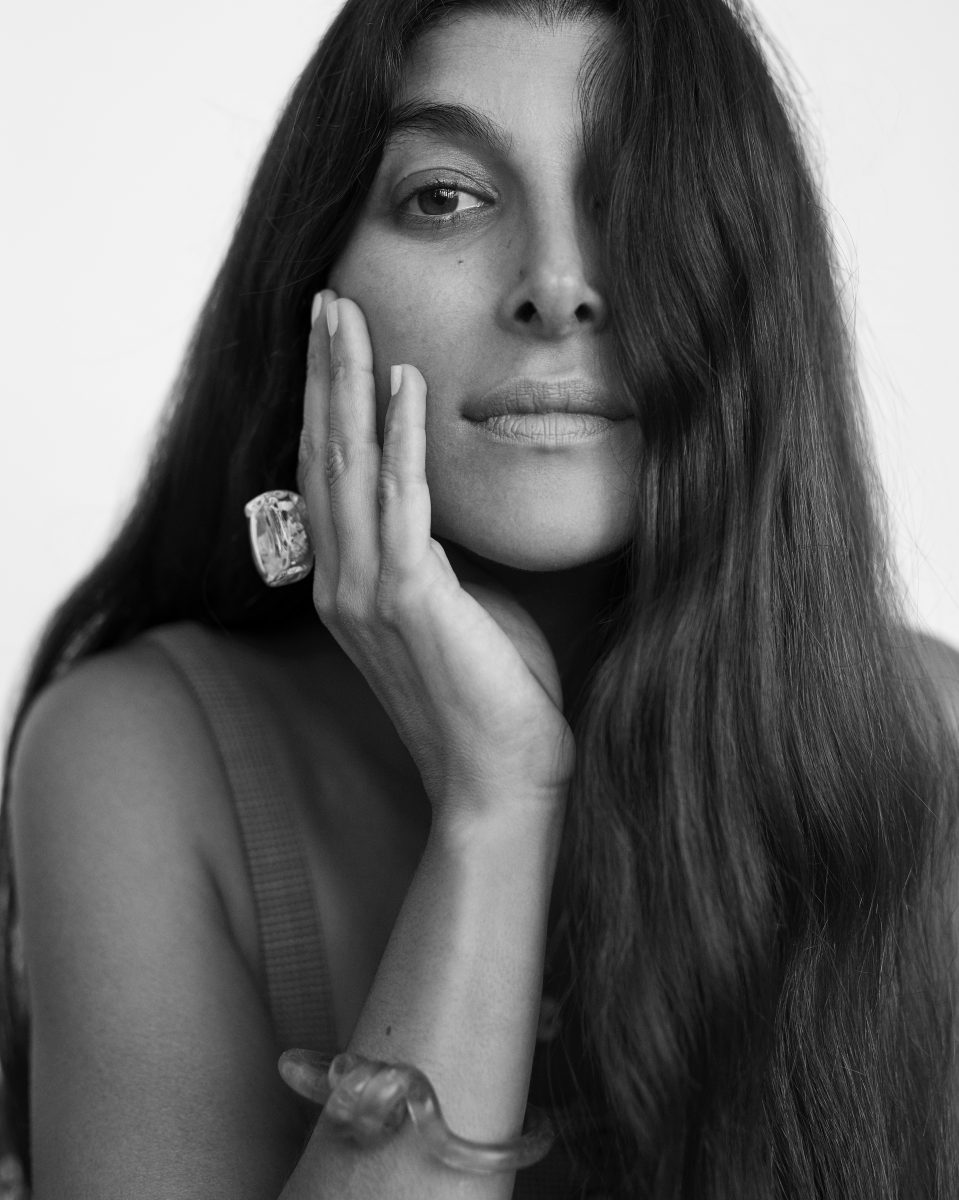CARMEN WINANT’S BODY OF WORK
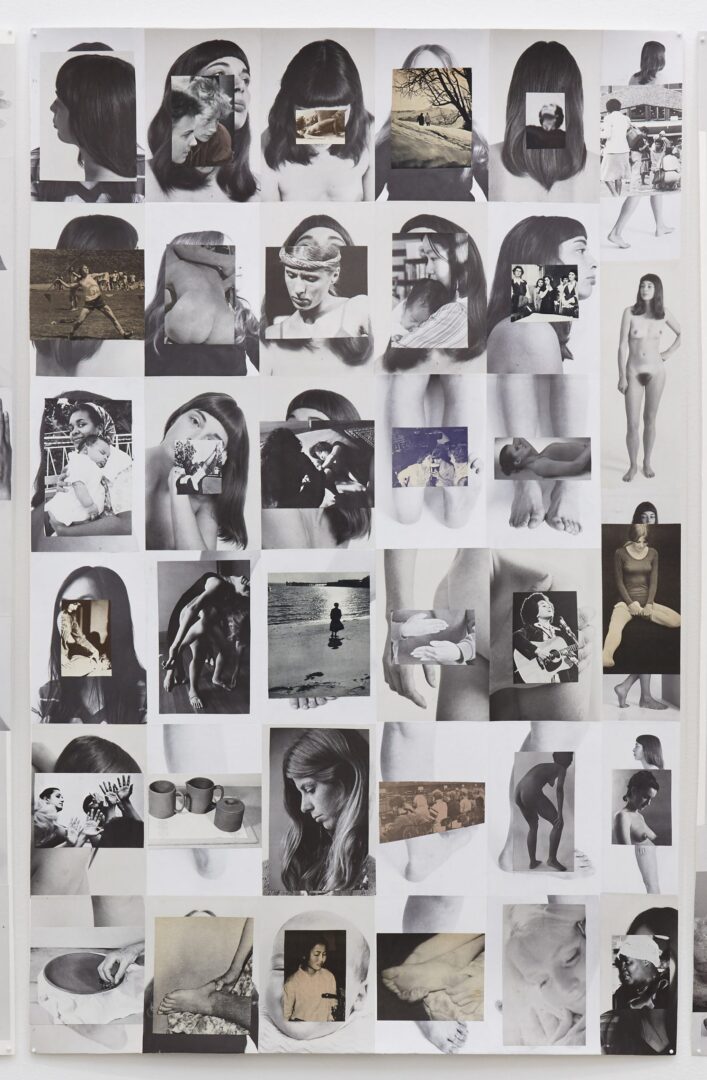
- Collages and artwork by Carmen Winant
- Photographs of exhibitionCarl Henric Tillberg & Kurt Heumiller
- Words by Nicholas Goodman
17
Of life’s turning points, it is the process of birth that is passed down with the broadest brush. Even now, in the flood of information, there is relatively little that mirrors the reality of a new mother’s experience. Between the feeding and rearing and sleep training, so much of it is decoded, but there is a stigma on discussing the physical toll women face. It’s incredible to think that something so natural and so vital, that so many go through, could still be so misrepresented, but it’s only one part of a much larger issue.
Women’s experiences, their bodies most especially, still aren’t seriously considered or given the attention they deserve. Even when they are, the conversation around sexuality and health has been made so political, it’s either stifled or avoided entirely. In denying that reality—or worse, grounding it in parody—women are still not being seen.
How could it be that in 2019 women’s bodies are still concealed in this way? The interrogation of that subject animates the work of Carmen Winant. Scattered across a series of projects, installations, collages, exhibitions, and essays, her work pushes back against the tendency to compartmentalize the world of women. The power of her assertion—that there is a dangerous rift between the reality of women’s lives and the myth society tells us about them—echoes in the thousands of images, stories, and individuals she assembles, each in their own way imploring us to finally have this most needed conversation.
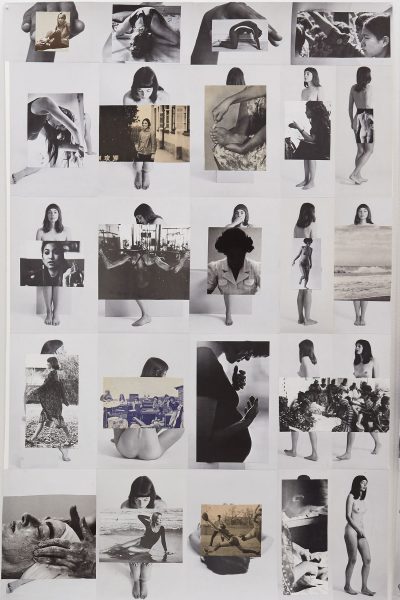
Alexandra Nataf: Was there a specific catalyst that led to you identifying as a feminist when you were younger?
Carmen Winant: Both of my parents are feminists, but my first mentor really was my mother. She found her identity as a younger woman in that movement—she helped to shape it and participated in it, so I really grew up with that ethos. It was rooted in me in ways that I only felt later. When I went to UCLA to study art, I took classes that opened me up to women’s history and this moment in time. And so this thing given to me by my mother merged with my education to form my sense of political identity as a feminist and as an artist.
AN: You never really appreciate the grounding you get from your parents until you realize the number of people who had to learn those things on their own.
CW: It gave me a real head-start. Later, when I encountered the kind of sexism that the world offers, I was more prepared. I had a sense of my own worth and of the history that preceded me. Not only did that give me context for my art, it gave me a stronger sense of self.
AN: Was that the through line that led you to wanting to explore the body in your work?
CW: Actually that became central to me as an athlete in college. I was a competitive long distance runner at UCLA—it is the reason why I went there. I ran track and field, cross country, even indoor track and field in the winter, so it was year round. As you can imagine, that requires a dedicated sense of being inside your body. I was constantly measuring and managing myself, making sure I didn’t get injured, making sure I maximized my physical potential. It was quite an intense period in my life. I kept a journal where I wrote everything that I ate each day and every mile that I ran and which stretches I’d done. You become hyper aware of your body. Because I’m living inside a woman’s body that also meant not getting my period for five years and losing a lot of bone mass.The process eventually informed my sense of being a feminist, which is also about occupying your body in a certain way, feeling powerful inside it, feeling its wounds, and coming into your agency. It was a really meaningful experience, learning that discipline, but it was also quite painful. It taught me how to think about repetition and ecstasy and boredom and anxiety as they relate to women’s bodies in the world, all things that I feel surface in the work.
AN: That’s so interesting to approach it from that angle because I think one quality that makes your work so special is how deeply personal all of it is.
CW: I know it’s a bit unusual, but I don’t think it was an accident that one thing led to the other. A number of feminists have written about this—Germaine Greer chief among them—that there is a real disconnect between women and their bodies. Running enabled me to bridge that separation in a way that was really powerful. Of course I would have never thought of it in that way before but looking back I can’t help but think that decade or so of training was really significant.
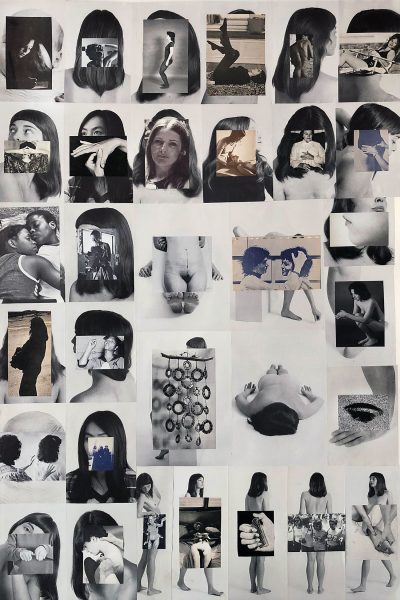
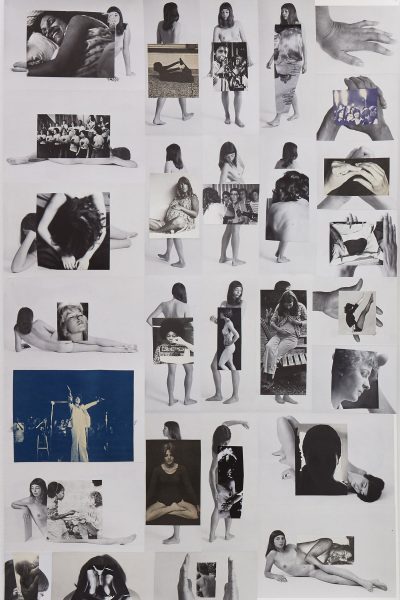
Carmen on feminismA number of feminists have written about this—Germaine Greer chief among them—that there is a real disconnect between women and their bodies. Running enabled me to bridge that separation in a way that was really powerful.
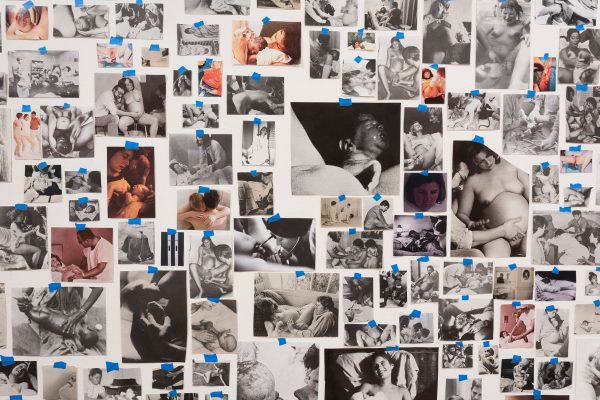
AN: I know that research is incredibly important to your work, but I was curious how each creative thread starts to untangle.
CW: I find that if I’m too specific at the outset it often times doesn’t work. For instance, two years ago I decided I wanted to work on a project about Anita Hill—this was obviously before the Kavanaugh hearings and everything that’s come to bear recently. So I started in this really dedicated way to look for material. As I was in that process I inadvertently started collecting these images of women in self-defense postures. I didn’t even realize I was doing it. Of course those images of women defending themselves have a relationship to Anita Hill, but it wasn’t the intended outcome. Even My Birth, which was originally meant to be only images of women literally pushing a baby out—that moment in which one body emerges from another—became something more reflective of the continuum of labor. For me it’s important to be flexible because being too rigid never yields the kind of results that I want.
AN: I also think that discovery is really important to the work itself. Did going through that experience bring you to an understanding of why the reality of women’s sexuality, birth especially, is still so shrouded?
CW: It’s obviously very complicated. This is not a new idea and I’m certainly not the first person to say this, but women’s work is relegated to a space of invisibility. That includes everything from childbirth to domestic labor—work that is not considered intellectually serious or viable. That was the basis of my thinking for the work, particularly after I gave birth the first time. I just couldn’t believe the experience. I had no precedent for it and I realized there wasn’t even a vocabulary within culture to describe it. When we see birth in movies or television, if we ever see birth, it’s like a parody of itself. There is the woman screaming at her husband or doctor, then she just pops out a baby. The whole thing is kind of laughable. After undergoing the experience, I just felt: there is nothing in the culture that resembles it. Considering that all of us are born and many will give birth, it was important for me to make it visible and to do so in a place like MoMA that has thousands of people passing through it every day.
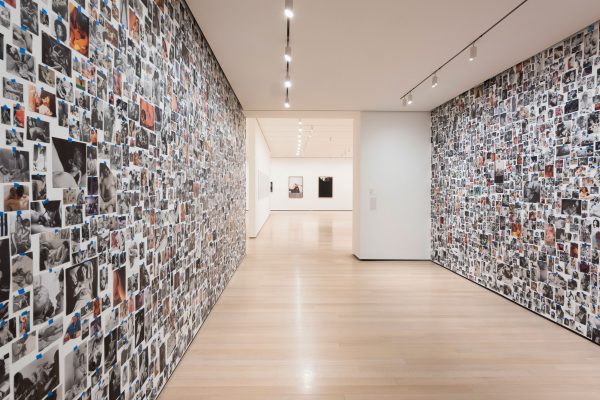
Carmen on exhibitionConsidering that all of us are born and many will give birth, it was important for me to make it visible and to do so in a place like MoMA that has thousands of people passing through it every day.
AN: That first day after it was installed must have felt so meaningful.
CW: To tell you the truth I was nervous putting it up because I didn’t know what the response would be. I didn’t know if people would feel violated by it, or find it disgusting or vulgar. I think I had a lot of internalized sexism around it. I think we all inculcate that bias a little bit. So I had some doubts.
AN: How has the overall response been since?
CW: It’s been so amazing. Seeing people move through it has been a really profound experience for me. Normally museumgoers pass through or pause just for a few seconds but people stayed and looked and continued to look. There were fathers explaining the images to their young sons. The most profound for me were the older women, who probably didn’t even have their husbands in the room with them, who maybe gave birth under twilight sedation or just didn’t talk about their experience with anyone because it was totally unheard of. Watching those women look at these pictures was perhaps the most affecting. And then there were also people who put their head down and passed through. It was really interesting, really telling. I couldn’t have anticipated the ways in which the audience would inform and activate the work.
AN: As a mirror of your own experience, it must have been really powerful to see people contend with those images. I know this is personal but I was curious how you think about your two births in light of all that?
CW: I’m more than happy to talk about it. I mean, that’s the point of the work—to demonstrate that women should be asking each other these questions, and having these conversations in public. Each of my births was different in some way. Both were in hospital with midwives, both were vaginal, but my first birth took almost thirty-six hours so it was quite protracted, and I was medicated for the very end. I was hoping to have an unmedicated birth the second time—to experience what that felt like—but a week before giving birth I fell and broke my coccyx. I had to get an epidural and ended up having a very different kind of birth, one that went much quicker. It’s a complicated thing because there are a lot of expectations around what the experience will be and it never is the thing that you anticipate. Most of all, of course, my sons are healthy and came out of my body, both of those facts are important. On the other hand, I feel as though I’ll never know entirely what it feels like to not be numbed when I’m pushing them out and undergoing that experience. That’s not something I’m mourning, but it’s something that I’m curious about that I might never be in contact with.
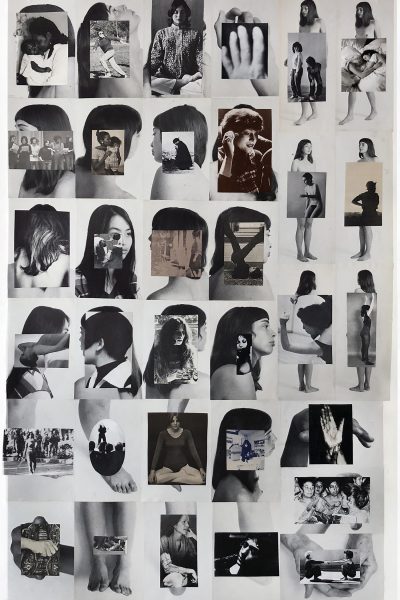
AN: I think most people have a fairly sanitized idea about the ways a woman’s body changes over the course of pregnancy and after. If it’s discussed at all, it’s in the context of how fast a woman “gets her body back.” Was any of that narrative in your mind?
CW: Just as much as I was amazed by giving birth, the process of being pregnant itself was equally astounding. Feeling a body moving inside of my body was alien. Most women feel an immense pressure as their body changes, however. You go from moving around in the world as an object of desire—as a sex object frankly—to being in the body of a mother. All of a sudden your purpose changes: your breasts are meant for feeding someone and your vagina’s bleeding and your stomach is sagging. It’s a pretty intense reckoning. It took a year for my body to even look like something I recognized, and then I got pregnant again. Like a lot of people, I’ve internalized what it means to be beautiful and what kind of body aligns with that notion. That body is not a mother’s body. In a lot of ways, that body —the vision of that kind of body—belongs to men. So I’d be lying if I said that I was totally emancipated from those pressures.
AN: How do you see the broader discussion around women’s bodies and sexuality and health in light of the current moment?
CW: We’re living under a patriarchal regime in the Trump administration and it really throws into relief just how vulnerable women and women’s bodies are. In some ways that makes the work relevant even though it’s tragic. Another way to answer the question is to talk about the evolving status of feminism itself, which is really much more complicated than it was forty years ago. It’s really a kind of messy business now—it’s evolved in interesting ways and become more sensitive to intersectionality, but it’s also been coopted by capitalism and used to sell shit. Besides being reductive about a complicated subject, it also gives a contradictory message to young women. This is a really important, if often confusing time to be a feminist. In my opinion, there is space to disagree on the terms, but that fundamentally there need be shared values, a shared ethic.
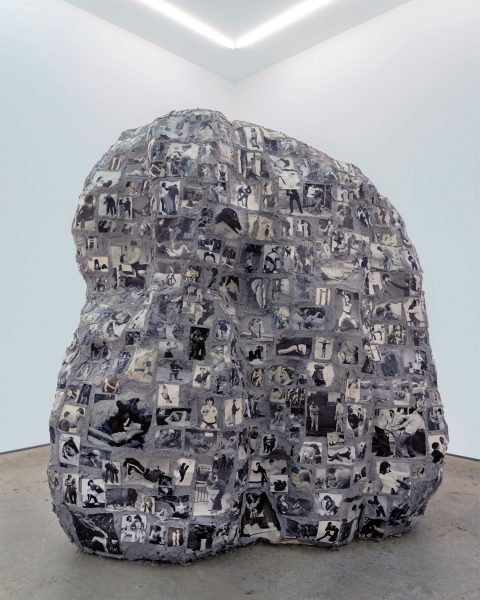
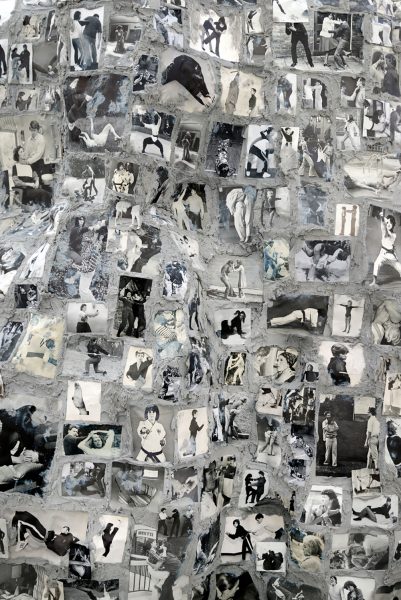
AN: And now you get to instill all that in two boys.
CW: It’s really interesting, the irony of it. I never imagined having male children because, I don’t know, frankly the experience itself felt so distant from my own. I just imagined that they would be like me, that they would be women. I’ve had to recalibrate my expectations a bit and strategize how to raise them so that they are competent and confident and deeply aware of all the things we’re talking about.
AN: Lucky them, to be honest. Has it been hard to merge your two selves: artist and mother?
CW: It’s really hard. I’m still learning to balance the insanity of being a parent to a one-year-old and a two-year-old with maintaining my life as an artist in a way that’s selfsustainable. My own parents instilled in me the value of caring about your work and having your world be bigger than your children. I know everyone approaches that differently but for me, that’s the balance I’m trying for.
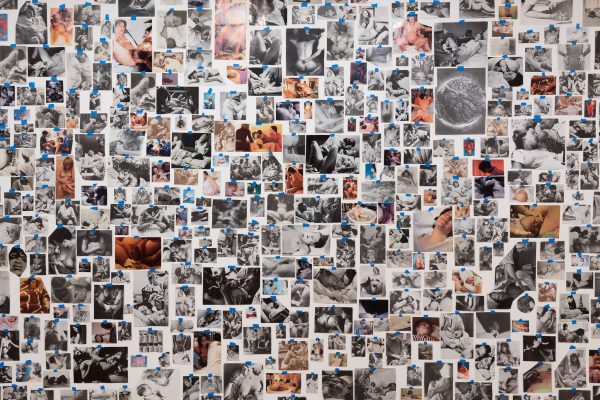
This profile was originally published in Issue Nº8, 2019
Photographs by Carl Henric Tillberg courtesy of Stene Projects Stockholm
